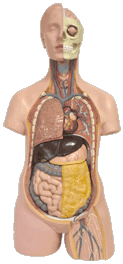At WiseGEEK, we're committed to delivering accurate, trustworthy information. Our expert-authored content is rigorously fact-checked and sourced from credible authorities. Discover how we uphold the highest standards in providing you with reliable knowledge.
What is Anisomycin?
Anisomycin is a biological compound naturally produced by some Streptomyces bacteria. It interferes with protein synthesis in a number of organisms and has potential clinical applications in a number of areas. One area where it is not effective is in the treatment of bacterial infections. This compound is primarily used in laboratory settings, and as of 2011 had not been produced by synthetic means, although researchers have been experimenting with methods for synthesis to produce this compound in more reliable and large concentrations.
By inhibiting protein synthesis, anisomycin can prevent the expression of DNA. Protozoans and fungi are vulnerable to the compound, and when researchers originally discovered it in the 1950s, it was proposed for use against these infectious agents. In the lab, researchers can use anisomycin in experiments where they want to be able to inhibit DNA synthesis, for activities like isolating living organisms in culture. Laboratory suppliers with lines of biological compounds sell anisomycin intended for laboratory use through their catalogs.

Companies involved in anisomycin production grow farms of the bacteria that produce it in controlled conditions so they can harvest the compound and control quality. The final preparation is not intended for medical use in humans or animals and is sold with labeling clearly indicating it can only be used in laboratory environments. Legal limitations may also require labs to log requests for purchase and to exercise caution in distributing the compound to make sure it is not used inappropriately, as this could create a safety problem.
In human research, anisomycin has two potential applications. One is as a psychiatric drug, as it appears to be active in some parts of the brain. Notably, anisomycin can interfere with protein synthesis in the amygdala, potentially blunting fear responses and helping people manage traumatic or upsetting memories. The drug may also be active against cancers, as it can target replicating cancerous DNA and prevent it from proliferating, stopping tumor growth.
Like other biological compounds, anisomycin is a topic of interest for researchers who want to develop new medical treatments and laboratory techniques. The process of turning a biologically active compound into a commercially useful pharmaceutical can take a very long time, as researchers need to be able to produce the compound reliably, find out what it does, and determine whether it is safe for use in humans. This process may conclude with a determination that a compound has no medical applications.
AS FEATURED ON:
AS FEATURED ON:










Discuss this Article
Post your comments